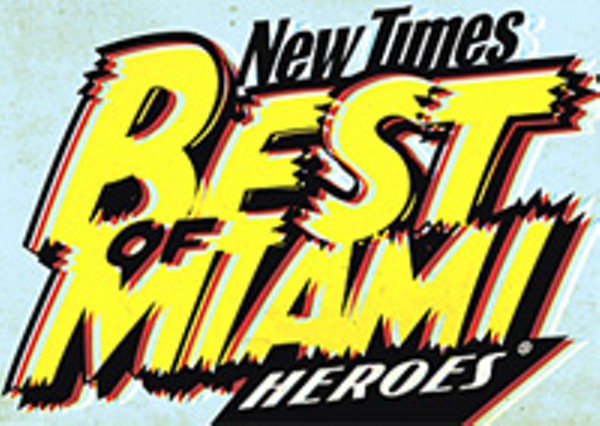Best Chef to Come Back
Johnny Vinczencz
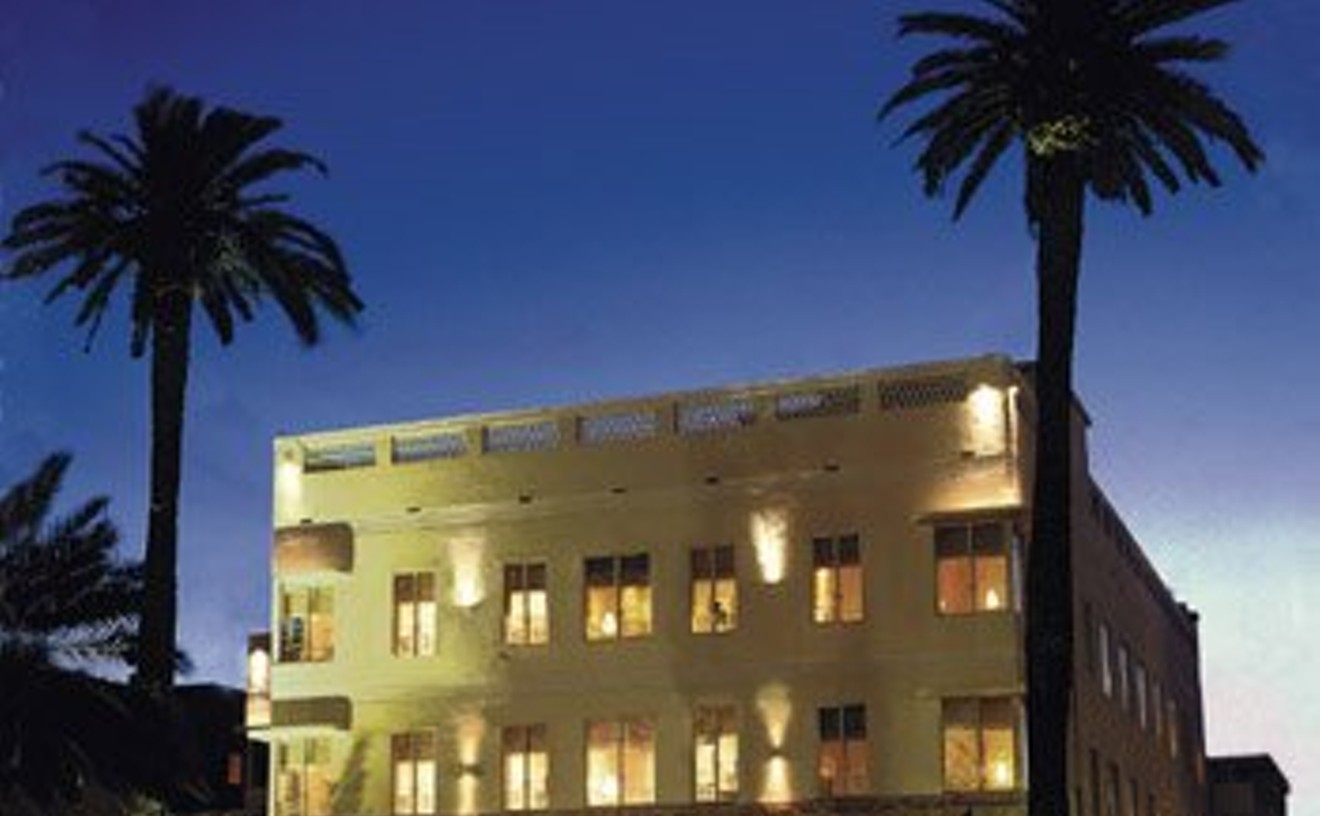
He gained fame in the mid-Nineties as a cutting-edge American chef with a fondness for big, bold, barbecue-ish flavors brightened by tropical island accents. Back then Johnny Vinczencz (aka "the Caribbean Cowboy") ruled the roost at the Hotel Astor. One day the irrepressible chef packed his knife kit, picked up his South Beach stakes, and rode off to Delray Beach and De La Tierra at the Sundy House. Laid low, you might say. After some years he ambled down to Fort Lauderdale and opened a place of his own, Johnny V Las Olas, which was, and still is, successful enough that folks in Miami Beach just assumed that they'd never see V in these parts again. Old cowboys never die, though, they just become a little less Caribbean and a little more Latin as they grow older. Or at least that's the case with Vinczencz, who after seven years away has come full circle with a return to the Astor, where this time he is proprietor as well as chef — and is calling his cuisine "nuevo American." Can he reclaim his spot on top from all the new kids in townç Stay tuned.
- 956 Washington Ave, Miami Beach, 33139 Map
- 305-531-8081
- www.hotelastor.com
Best U-Pick
Home Grown U-Pick
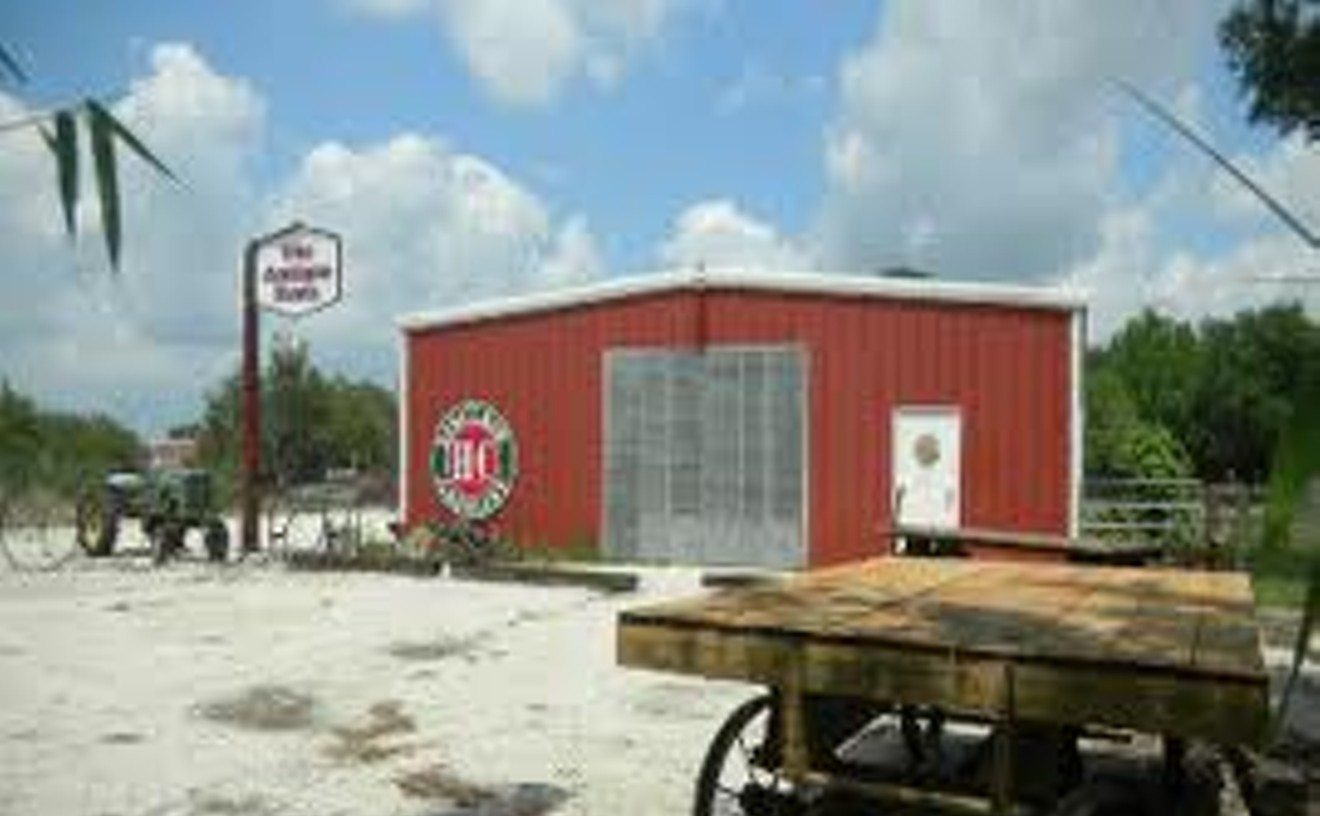
"Strawberry fields are not forever, at least not in Kendall, anyway," chuckles Bill Taylor, as he points to the Publix across the street with his large, calloused hand. "Those chain stores pick the tomatoes when they're green, and they sit in a cooler somewhere to ripen. If you pick them out here they're juicier, they taste fresher, sweeter; and it's fun to pick your own."Behind Bill and his little white shed is a large green field with rows of sweet luscious strawberries, big red juicy tomatoes, plump green peppers, and tall yellow sunflowers waiting to be picked. The scene resembles a Van Gogh painting.Bill has been working at U-pick stands in Kendall for more than fifteen years now. "The last U-pick where I worked was 42 acres," he says, "and now it is another Costco shopping center." He takes a handful of delicious-looking red tomatoes from the scale. "Kids do not even know what a tomato plant looks like anymore." Carol, who has been working at this stand with Bill for more than five years, adds, "People need to come out and pick their own flowers and vegetables at least once in their life."There is no electricity or telephone at this U-pick stand. The cash register runs on 4C batteries. Sweet peppers and tomatoes are 65 cents a pound and strawberries are $2.50 a pound. Sunflowers are $1 each, and snap dragons are $3 a dozen to pick. There is also cilantro, basil, dill, and flat-leaf parsley, all $1 a bundle. The stand is open every day from December through May, 9:00 a.m. to 5:30 p.m
- 157th Ave. and Sunset Dr., Kendall, 33193 Map
Best Chef to Go Away
Robbin Haas
Gather round, kiddies. Gramps is gonna tell ya a story about the good old days on South Beach. See, there was this place called Colony Hotel on a glorious street called Ocean Drive — what's thatç Oh, very well, glad to see it's still around, but back in those days, the Colony was, as we liked to say, "the grooviest spot to be in with the in crowd." Or something like that. Oh, wait, no, this was the early Nineties, not the Sixties. Anyway, Robbin Haas was the talented young chef there, and it was the hottest restaurant in town, and the weather was hot, too. Which reminds me — it's a little drafty in here, noç What was I sayingç Oh, yes, thank you. Mr. Haas was a wild one all right — rarely got enough sleep, if you know what I mean. But he was talented, and the flavors of his food jumped off the plate like a frog from a frying pan. I haven't the foggiest idea what it means, it's just an old saying, now don't interrupt me like that. What was — oh, Bang was the next place he worked, and then that was the best restaurant in town. Next came Spleen, which was a great Grove Isle steak and seafood house when it first opened with Haas at the helm. Ehç Baleenç Yes, I suppose it could be — well, either way, Haas made it happen, and after that he put the spark in Chispa, and was consulting with restaurant groups all over the country. Then he went to Costa Rica, on vacation I think, and he came back ranting and raving about all the great foods and beautiful foliage and whatnot and then he moved there and we haven't really heard from him since. What's thatç Yes, you can all go now.
Best Righteous Meal
St. City Church of God

That's right, it's a church. As a way to raise money for the small congregation, St. City has been selling barbecue chicken and pork out of a little street-side stand for years. You can probably smell the parking lot-hogging barbecues (old steel barrels) from heaven. People line up just to buy the signature not-too-sweet tangy sauce. Jesus would get the rib sandwich (basically a hill of ribs with bones in and two slices of white bread)— $5.50 and worth every penny. Sides of okra and tomatoes, collard greens, pigeon peas, or potato salad will set you back $2 each (they're only available on Fridays and Saturdays). A portion of banana pudding, sweet potato pie, or bread pudding goes for about the same.
- 9302 NW 22nd Ave., Miami, 33147 Map
- 305-693-3877
Best Chef Under the Radar
Michael Gilligan

George Martinez
Michael Gilligan has been close to kitchens, in one way or another, since being born above one in a family-owned pub in Birmingham, England. Prior to becoming executive chef of Atrio (pronounced Ah-trio) in the summer of 2005, he toiled for eighteen years — in his native country, in France, as sous chef at the Ritz-Carlton in New York, as chef at Candela and Metro 53 in the same city, and at Rumi on South Beach. But it is at Atrio, a gem of a restaurant within the Conrad Miami, that Gilligan's "Asian-Latin-influenced progressive American cuisine" has matured into something truly special. You can reap the benefits of experience in his avocado soup with lime and jalapeño. In barramundi yakizakana, a whole, grilled organic fish glazed with ponzu. In a grass-fed veal chop with Gulf shrimp mashed potatoes. You needn't spend a bundle, either, as a three-course prix fixe lunch menu is available for $20. Didn't know about chef Gilliganç You do now. And once you taste his food, you'll never forget the name.
- 1395 Brickell Ave., Miami, 33131 Map
- 305-503-6529
- conradhotels.hilton.com
Best Restaurant Under the Radar
8 1/2 Restaurant

It's not as though nobody knows about this place. In fact the restaurant seems to be doing just fine. But with Bouley, Govind, Johnny V, and a near tidal wave of splashy debuts this past year, chef Jason McClain's 80-seat charmer (with more outdoor tables in front and back) seems to have been lost in the shuffle. Undeservedly so. The modern, Mediterranean-theme cuisine bristles with boldly assertive flavors, from Moroccan-spiced calamari spiked with Meyer lemon, to lamb carpaccio drizzled with banyuls syrup (a red Pyrenees wine), to entrees such as veal tenderloin rimmed in crisp Serrano ham, and pan-seared grouper pooled in wild mushroom and truffle broth. The amiable atmosphere at 8 1/2 makes dining here a personal and pleasurable experience — though not an inexpensive one. Main courses run from the upper-twenty to mid-thirty-dollar range. Wines are marked up more modestly, and of the 80-plus selections, some thirty are available not just by the glass, but in three- or six-ounce pours. Check it out soon — joints like this are never as good once the radar picks them up.
- 825 Washington Ave., Miami Beach, 33139 Map
- 305-938-4040
- clintonsouthbeach.com
Best Restaurant in Coconut Grove
Berries Restaurant & Juice Bar
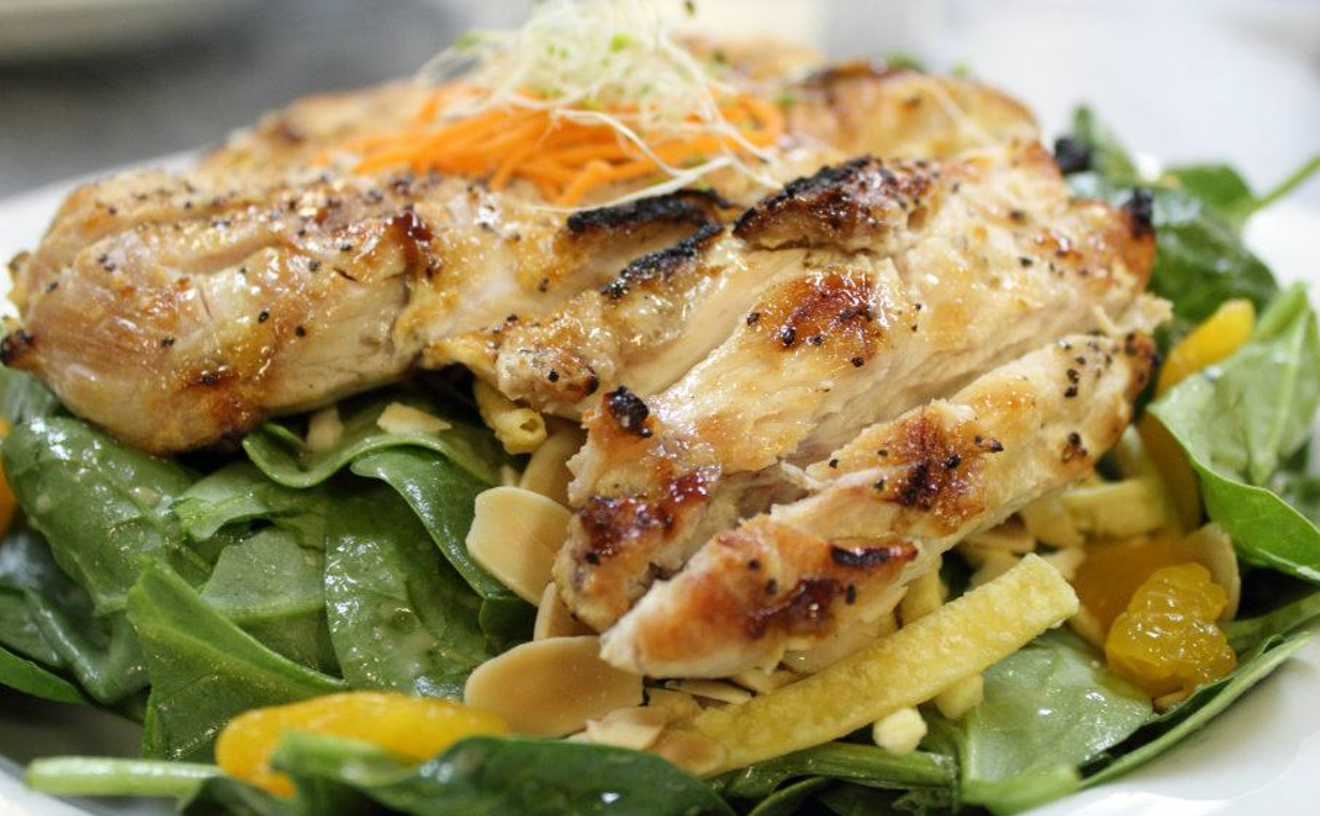
Berries is the type of restaurant that every neighborhood needs at least one of. Whether for breakfast, lunch, or dinner, when you grab a seat here you know you'll be getting hefty portions of hearty, well-prepared food at eminently reasonable prices (almost all entrées are under $20). The cuisine is nothing you haven't seen before, but chances are you haven't seen it done this consistently well. Fried calamari is greaseless, hummus is creamy with a slight chile piquancy, pastas are garnished with fresh, ripe tomatoes, and there are surprisingly satisfying specials such as mojo-marinated pork loin with pickled red onion, garlic mashed potatoes, and sauteéd spinach — now that's a square meal, alongside which you can wedge a huge, homemade, heartwarming chunk of milk chocolatey chocolate cake. As the restaurant's name implies, juices, shakes, and smoothies are house specialties, but at dinner you might want to consider the concise roster of inexpensive wines. A lushly foliated outdoor patio, daily happy hour with drinks 50 percent off, live jazz twice weekly — Jesus, what more could you want from your neighborhood restaurant?
- 2884 SW 27th Ave., Miami, 33133 Map
- 305-448-2111
- berriesinthegrove.com
Best Restaurant Downtown
Soya & Pomodoro
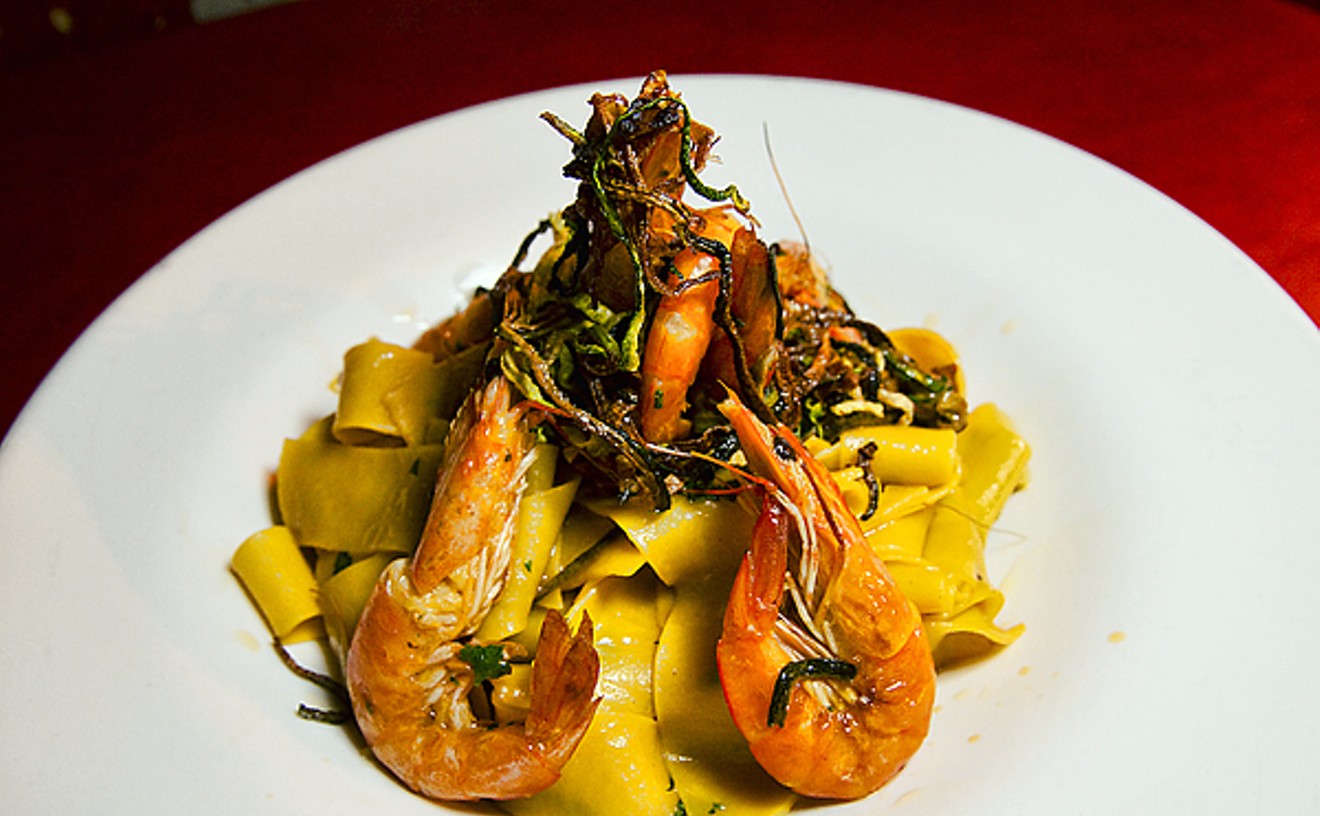
George Martinez
Soya & Pomodoro is a little restaurant that serves a soy burger at lunch ($6) but is otherwise all Italian. It's tucked away in a tiny spot on a rickety street in downtown Miami. No, sorry — it's tucked away in two tiny spots, one indoors, with two or three tables and a ventanita; the other an open-ended, kinda outdoor spot under a towering, but again rickety colonnade. Yet it's all strangely seductive, rustic, and charming, like a trattoria you might stumble into on some side street in Rome. The two spaces are attached to one another, and a kitchen somewhere in between pumps out what they call "simple food made with love," but what we call damn tasty red-sauce Italian food. Can't go wrong with ricotta and mushroom ravioli, or spaghetti Bolognese, or handmade gnocchi, or any of the pastas — they're terrific! And get this: Every menu item, excepting sirloin steak and salmon, is under ten dollars. The fish and steaks top out at $11 ($14 for dinner). Eminently drinkable wines are available at similarly bargain prices. Espressos are topnotch, and so is the homemade tiramisu. Soya & Pomodoro is open for breakfast and lunch daily, but serves dinner only on Thursday evenings, when there is also live music. an We haven't yet gotten around to tasting the soy burger.
- 120 NE First St., Miami, 33132 Map
- 305-381-9511
- soyaepomodoro.com
Best Restaurant in South Beach
Sardinia Enoteca Ristorante
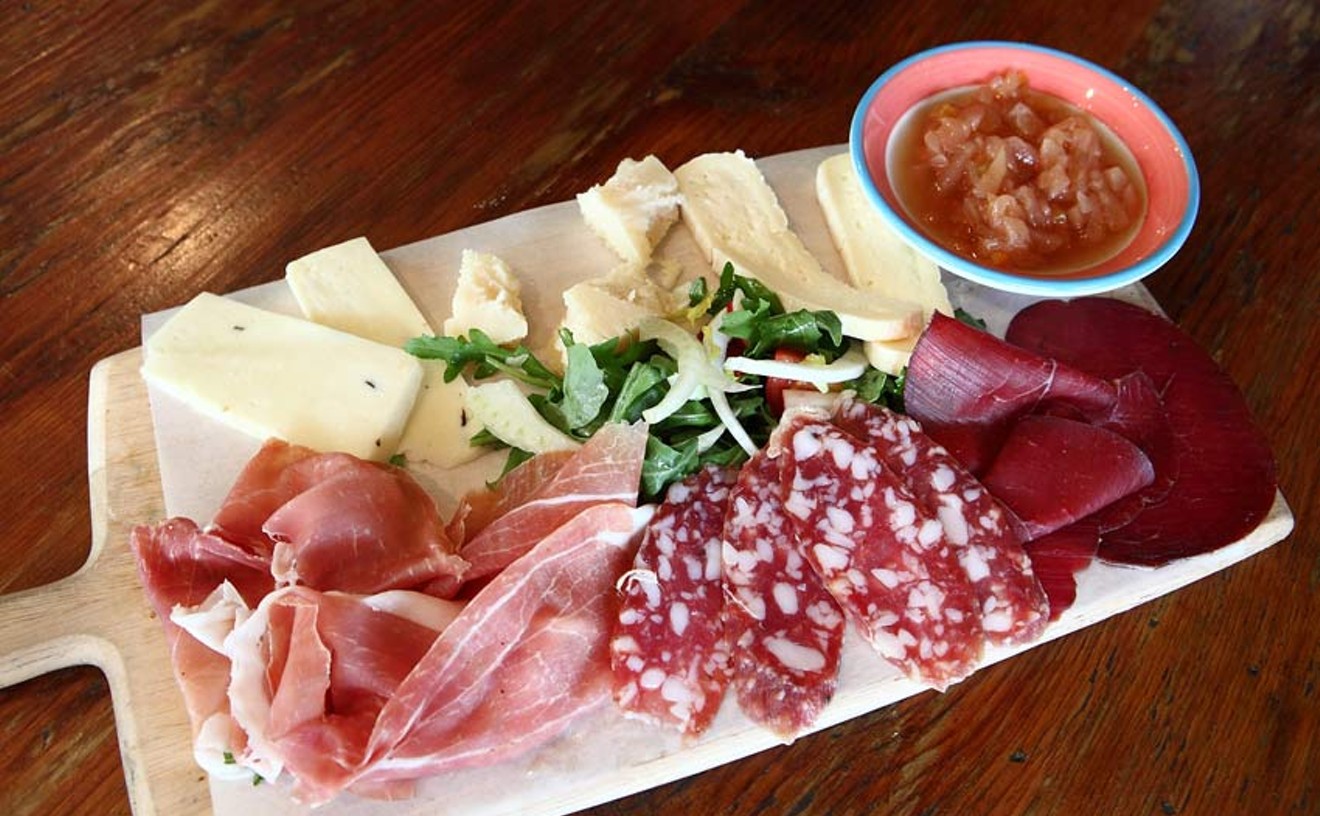
It just appeared, as if out of nowhere — one day there was no Sardinia Enoteca Ristorante in South Beach, the next day there was. And the day after that the 96-seater was packed to the gills, and hasn't seen an empty chair since. While "party hearty" is the draw for many a SoBe dining establishment, it is Sardi-hearty fare, rustic and robustly flavored, that has lit the fire of the public's fancy here. Lighting the smoky fire of a roaring open hearth are logs of wood beside which you'll find roasting baby suckling pigs, pancetta-wrapped quail, baked baby octopus, peasant-style stews, and Black Angus rib eye steaks. Sardinia offers a surplus of enticements unique to South Beach restaurants, among them olives with wild fennel flowers, boar sausage, chestnut honey, Italy's diverse cheeses, Sardinia's distinctive wines, professional service, and affordable prices — most pastas are $14 to $24; main courses are in the midtwenties range. There are no reservations accepted, so take advantage of a less-crowded lunch hour, or take your place in line.
- 1801 Purdy Ave., Miami Beach, 33139 Map
- 305-531-2228
- www.sardinia-ristorante.com
Best Restaurant in South Miami-Dade
Town Kitchen & Bar
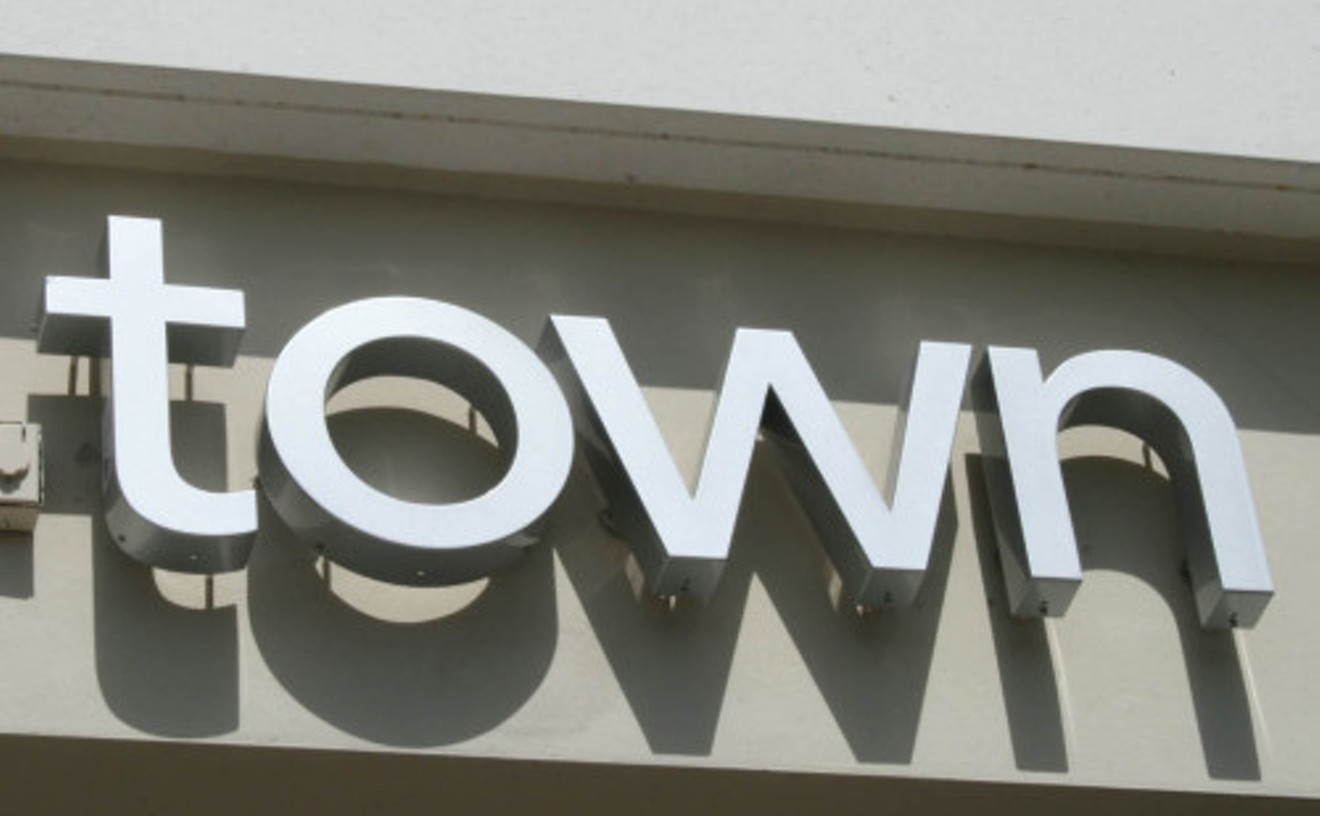
Once upon a time, South Miami was a big mall and nothing more. That was, like, a year or two ago. Then something happened, sort of suddenly, and things just started popping up. Things like clubs. And cafés. And restaurants. Even good restaurants, which the former mall-city never had many of. No dining establishment epitomizes the neighborhood's resurgence so much as Town Kitchen & Bar. Its urban-industrial design, with poured concrete floor and walls, looks more up-to-date than earlier area eateries. The big-city bar scene attracts a young and professional clientele who, cocktails in hand, overflow onto the outdoor patio in a way not before seen in these parts. Food is fun and fulsome, a medley of pizzas, pastas, salads, sandwiches, mussel pots, seafoods, and steaks. The last are especially fetching: grain-fed Angus beef from "Stockyard's Packing" in Chicago, sliced in-house, massaged with a wet rub of seasonings, and broiled at 1400 degrees. Prices are kept affordable — a twelve-ounce Delmonico steak dinner is just $22. Key lime pie is a product of The Blond Giraffe Key Lime Pie Factory, ice cream is imported from The Frieze, and espresso is courtesy of Illy. Those are quality goods, which with a healthy dose of joviality and cool urban vibe make this our kind of Town — be it lunch or dinnertime.
- 7301 SW 57th Ct., South Miami, 33143 Map
- 305-740-8118
- townkitchenbar.com


